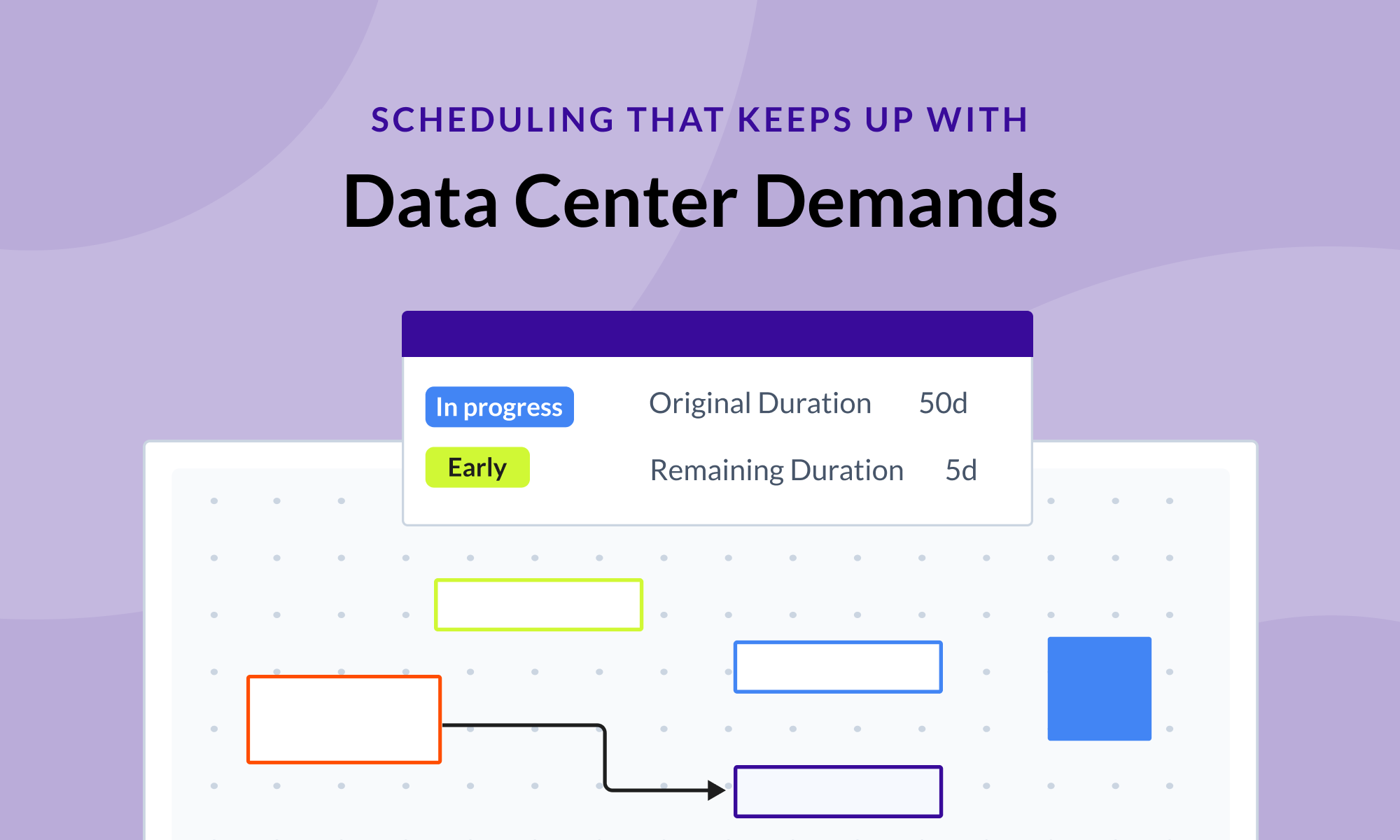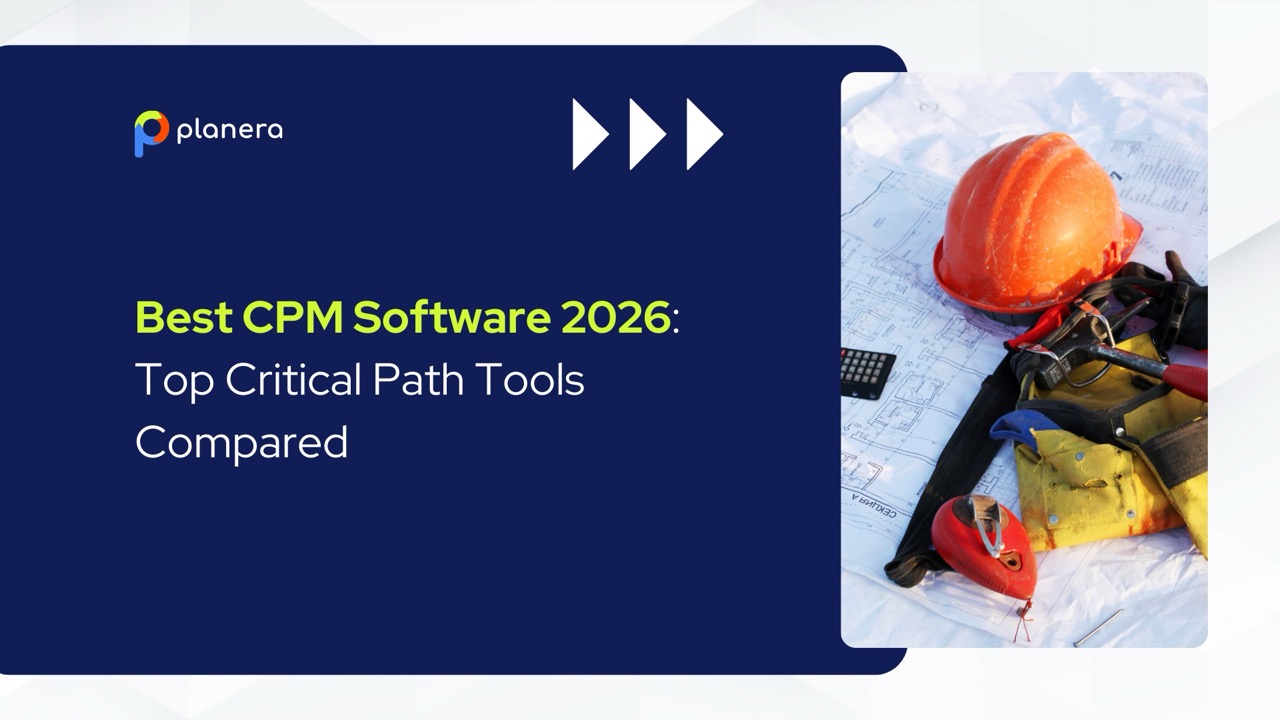Scheduling That Keeps Up with Data Center Demands

The High-Stakes World of Data Center Construction
Data center projects demand uncompromising quality, precise scheduling, and reliable execution. With aggressive timelines, multiple specialty trades, equipment with extended lead times, and high owner expectations, there is little room for error. Yet, many teams continue to rely on outdated tools that struggle to keep pace with the evolving demands of these complex projects.
“These projects are only getting bigger and more complex,” says Todd Von Krosigk, Senior Superintendent at HITT Contracting. “P6 is a great tool, but having a 96-page P6 schedule is insane to update.”
That’s where Planera steps in, designed specifically for complex, mission-critical projects like data centers.
A Fast-Paced Industry Needs an Adaptive Schedule
Data centers are highly technical, fast-paced, and constantly evolving. From mission-critical milestones tied to the owner’s go-live date to the simultaneous work of numerous trades—electrical, mechanical, controls, and commissioning—managing the schedule requires a tool that adapts as quickly as the project evolves.
“With Planera, the schedule is in a constant motion of updates—and it is what’s real,” explains Von Krosigk. “You can micro-schedule out specific rows, trenches, or data halls. Every team can have their own schedule space that pipes back to the master.”
Owners, designers, and vendors frequently adjust scope, and with Planera, teams can align in real time, eliminating the bottlenecks of static PDFs and outdated Gantt charts.
The Cost of Falling Behind: Risks & Lost Incentives
For most mission-critical projects, missing a milestone isn’t just an inconvenience; it comes with serious financial consequences. Liquidated Damages (LDs) are a constant threat, but leading data center builders know the true cost lies in not knowing you’re behind until it’s too late.
“If you’re 20 days into a 30-day duration and not even a quarter of the way through, you’ve already lost,” says Von Krosigk. “Planera helps catch that early—before you’re three rows behind in a data hall.”
Performance-Based Outcomes Matter More Than Penalties
It’s not just about avoiding penalties. High-performing teams are after Performance-Based Outcomes (PBOs): bonuses for hitting milestones early or exceeding reliability expectations.
“Everyone says, ‘We’ll make the day.’ My response is, show me how you’re going to make that day,” says Von Krosigk. “Planera lets us get granular—break tasks into trackable chunks so we know on day three if we’re already behind.”
By enabling micro-planning and real-time scenario testing, Planera helps teams proactively steer toward incentives instead of simply playing defense against LDs.
Collaboration is Critical
One of the biggest challenges in data center construction is keeping every stakeholder aligned. Field teams often operate in their own worlds, disconnected from the master schedule. That’s where Planera shines.
“Most of our field folks are used to three-week or six-week lookaheads,” says Von Krosigk. “Planera gives them the power to build and adjust their own schedules, without needing a master’s in P6.”
Even subcontractors benefit. Instead of Excel sheets, stickies, and emails, they see their tasks in one place and how their delays affect others. This creates shared accountability and better coordination during pull planning and weekly syncs.
“Nobody wants to be the guy pushing their tickets to the right during a pull planning session,” he adds. “Once they see how Planera tracks and exposes that, they get real.”
Better Decisions in Real Time
Predictability is everything. Planera allows project teams to model “what-if” scenarios instantly, testing the impact of a resequenced floor, a delayed chiller, or additional manpower.
“Sometimes we make mistakes in the upfront schedule. Planera helps us and our subs prove what’s real,” Von Krosigk says. “If you don’t see a way out, you need to know that, so you can mitigate before it’s too late.”
One Platform from Pursuit to Turnover
Transitions between phases often create gaps. For example, a team might use Excel in pursuits, P6 for their master schedules, and sticky notes in the field. Planera unifies the scheduling lifecycle.
From pursuit through commissioning, Planera ensures that every schedule evolves in one place, ensuring continuity, transparency, and trust.
Finally, Scheduling Software that Works for Data Centers
Data center projects are inherently complex, but managing the schedule doesn’t have to be. With Planera, project teams gain the flexibility, clarity, and real-time insight necessary to stay ahead, not just catch up.
“It takes work to get it to work,” Von Krosigk concludes. “But if your teams and subs buy in, Planera changes the game.”
You deserve better scheduling software
Powerful can be easy. Book a demo to see how.



